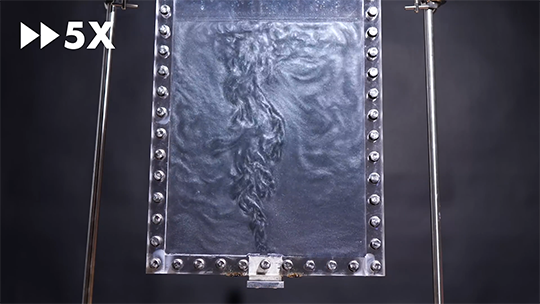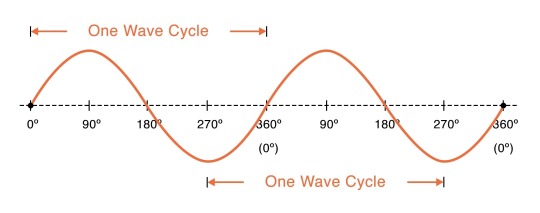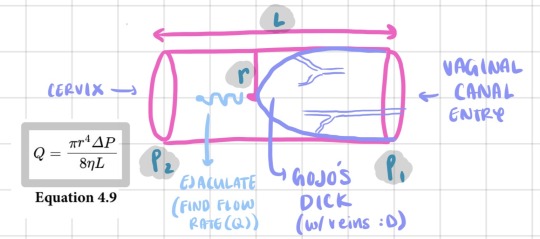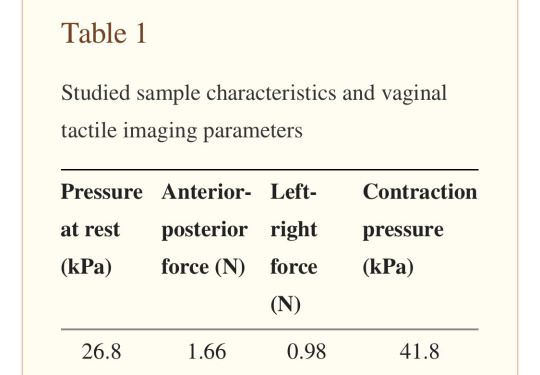#laminar flow
Explore tagged Tumblr posts
Text
Swimming With Cilia

Like most microswimmers, these Synura uvella algae use cilia to swim. Cilia are tiny, hair-like appendages that flap to produce thrust. Even under a microscope, the cilia are hard to see because they are so thin and move quickly in and out of the microscope's narrow focus. (Video and image credit: L. Cesteros; via Nikon Small World in Motion) Read the full article
63 notes
·
View notes
Text

Late night laminar flow painting.
I wanna paint this on a wine bar wall big scale
3 notes
·
View notes
Text

"Into the vortex of time - Chaos in a box"
With this collage I want to depict fluid dynamics - a wild mix of turbulent and laminar flows.
The 21 photos of this collage were from 2018.
In the photos I used piercing jewelry (mainly spirals and pinched tori).
Collage | 35x80cm | 3023/09/30
#splrals#shapes and patterns#fluid dynamics#flow#turbulent flow#turbulence#laminar flow#chaos#torus#tori#photography#conceptual#concept art#conceptual art#knottys art#knotty et al#motion#art
2 notes
·
View notes
Text
Otto's Sleek Phantom Jet Will Burn 50% Less Fuel Than a Normal Jet
Private aviation is currently bad for the planet, with emissions that have jumped 46% between 2019 and 2023. It’s even beginning to cause backlash, with two major airports in the Netherlands banning private jets from utilizing their facilities, to cut down on noise pollution and emissions. If private plane use is to continue, it needs to get more sustainable. Otto Aviation recently announced…
#clean air travel#laminar flow#laminar flow airfoil#Laminar Flow fuselage#Otto Aviation#Phantom 3500#private jets
0 notes
Text
People misunderstand flow in our reef tanks, and the needs of corals for said flow. Different coral species, and colonies, possess different needs of flow. Primarily the flow is considered in terms of powerhead turnover, although its effects are really localised throughout the aquarium, and it is inevitable that not all areas of a reef tank will receive the same flow. In all reef and fish only tanks, the turnover of the water through the pumps, should be at least ten times the total aquarium (not system) volume per hour. For the average, mixed reef tank, a flow twenty and thirty times the volume per hour is more appropriate, though this oversimplifies the very important matter.
Because it is an inexact matter, I will suggest rules of thumb, for determining how much flow a coral is receiving. Low flow would be enough, for example, to ruffle large, fleshy polyps such as those of Discosoma colonies, and the mantles of Tridacna clams. High flow would cause much swaying in soft, tree- or finger-like morphs of soft corals, such as gorgonians. Moderate flow would produce a pretty, 'dancing' effect on corals with long tentacles, such as torch corals. Despite what people sometimes think, it actually is possible to have too much flow, when stony coral polyps begin hitting their own skeletons, or simply fail to expand normally. Knowing the appropriate location by its exposure to flow, is in fact an intuitive and observational matter, not something helped by any test kits.
But what is flow to a coral? Corals are behaviorally simple, sessile animals, and they rely on their environment to bring them their foods, and remove their secreted wastes. Because corals adapt to local conditions, and this is reflected in their growth forms, the needs of a specific coral may depend more on the circumstances of its life history, or how it has grown, than its precise taxonomic identity. Though no coral is infinitely plastic, and some species are definitely more adjustable than are others. As a rule of thumb, corals such as many Acropora and Montipora species should be sourced as 'frags' to adjust without having already adjusted their growth habit to specific conditions elsewhere.
A constant and unyielding flow, or a combination of high and direct flow, can distress corals, even those favoring or demanding of high flow. It should be remembered that flow is potentially something dangerous to coral, and can tear or otherwise physically damage coral flesh. Therefore, flow should be neither too high nor too low, for even those corals regarded as high or low flow varieties. What is appropriate care may be determined by observing similar coral in aquariums where they are healthy.
The most basic form of flow is the output of standard power filters and power heads, known as constant or laminar flow. This jargon refers to the simple, unidirectional blasts of water flow these pumps produce in the aquarium. In itself this is not the most interesting, exciting, or useful form of flow for corals or their aquarist admirers. Nonetheless, it is possible to make creative flow effects, by positioning laminar pumps thoughtfully in the tank,and this can be achieved with a low budget.
Such an effect is the creation of surge flow, which is when water is moved to and from, in a semi-constant pattern - as in the effects of wave action in the 'surge zone', high on the reef slope. Surge can easily be simulated in the aquarium, by regulating the timing of pumps, positioned at opposite ends of an aquarium. Whereas gyre flow refers to robust, circular motions of circulating water, as are best provided and sustained using a special 'gyre pump', rather than standard powerhead designs.
Turbulent, random, or chaotic flow describes the phenomenon of unstable, unfixed directional flow, that is created when flow from two sources comes together. Creating turbulence using powerheads is much preferable than merely using them to create only laminar flow. It is worth pointing out the existence of so-called 'Japanese style SPS tanks', in which coral colonies considered to demand a regime of high flow, are grown in a 'low' turnover of 'only' around thirty times the tank volume per hour.
In such setups the positioning of ordinary powerheads, which generate laminar flow, is low down near the bottom of the tank. Such a thoughtful positioning of the pumps is chosen, because it optimises the turbulence of the overall water circulation, and somewhat creates a gyre-like effect. The flow is directed so as to travel up the tank walls then along the surface, before circulating through the aquarium. Thus the flow is good, without being as 'high' as it sounds, when it is measured simplistically as turnover per hour.
#flow#corals#reef aquariums#direct flow#indirect flow#laminar flow#turbulence#gyre#surge#japanese sps tanks#low flow#medium flow#high flow#constant flow
1 note
·
View note
Text
When I saw the Buddha moving to that music I thought “hey Captain D used that in his Laminar flow video!” I didn’t know he even made it! Or well , Mr. Flare.
136K notes
·
View notes
Text
Convection in Action

We're surrounded daily by convection -- a buoyancy-driven flow -- but most of the time it's invisible to us. In this video, Steve Mould shows off what convection really looks like with some of his excellent tabletop demos. (Image and video credit: S. Mould; submitted by Eric W.) Read the full article
#buoyancy#convection#DIY fluids#flow visualization#fluid dynamics#instability#laminar flow#physics#Rayleigh-Benard convection#science#turbulence
43 notes
·
View notes
Text
A god who has taken human form will urinate with perfect laminar flow...
0 notes
Text
I TOOK .....THE SLOWEST ...BLINK ...THAT MY TWO BRAINCELLS FORGOT TO CONNECT FOR 💀💀💀-- Like I have no words for this ...I'm astounded ...I'm in love ...I'm- ...LIKE THE FACT ITS EVEN RIGHT IN THE FIRST PLACE IS WHAT HAS ME WANTING TO QUESTION MY REALITY!?!?!?!? 💀💀😭😭
💀
...but this ....this is beautiful ...🩷.. iw we know how many kids he can let out at once 🤡


what is the flow rate of gojo’s sperm? 🤔
😈 😈 😈 ALRIGHT LET’S FIND OUT
shoutout to m00tie @quinnyundertow since u said there's nothing that turns you on more than hearing how mobile a man's flagella are. this one's for you bb.


alright, first off, because his cum is confirmed to be both incompressible fluid as well as move with laminar flow, these attributes satisfy the conditions of pouiseulle’s law:

i had to do a little bit of research to determine if it was laminar or turbulent flow, and apparently sperm travels with both stokes & laminar flow, which is pretty interesting, and also moves in a sinusoidal propagating wave, likely due to the movements/shape of the flagella


note: microscopic sperm travel & ejaculate fluid travel are two very different things, but i can’t solve for anything microscopic here so we’re just gonna go for the ejaculate fluid only
anyways, to use pouiseulle’s law, let’s first determine our variables, and make sure we get the units right as well! always draw a diagram w all the variables:

now, let’s identify the variables:
1. radius (r) of tube -> this refers to the pipe/tube, therefore in this case, the vaginal canal. now since gojo has decided to creampie, we can assume that the radius of the vaginal canal will be equivalent to the radius of his girth as he is stretching you out. gege told me the diameter of his big fat schlong is approximately 3 inch girth, therefore the radius = 3/2 = 1.5 inches
2. ΔP refers to change in pressure gradient, in this case i’ve decided to have P1 as pressure at vaginal canal opening, and P2 as pressure at the end where the cervix is. therefore, ΔP = (P1 - P2) for the equation. i know you’ve got that gorilla grip coochie, esp when the world’s strongest sorcerer is fuckin you SENSELESS, but all things considered this is a very difficult parameter to measure, therefore i found this article to help out with this:

we’re going to assume “contraction pressure” (at the vaginal canal opening) is P1, due to gojo’s intrusion. and we’re going to assume “pressure at rest” is P2 at the end near the cervix (he’s pulled out a lil bit ok this makes things easier for me)
kPa are the units that we want for ΔP in this case, therefore it’s a simple calculation:
ΔP = P1 - P2 = 41.8 kPa - 26.8 kPa = 15 kPa
3. the last variable we need to account for here is L, which is the length of the PIPE HE’S LAYIN INSIDE OF YOU (jk it’s just length of ur coochie). now, i imagine this man is a generous lover, and he’s alr made you cum a few before he stuck it inside, so with arousal, the vaginal canal length has likely increased to about 5 inches (moreso 4.75in based on avg values in research but he stretched you in even more during the sexing!!) therefore L = 5 in
4. the other two values are just constants:
π = pi 3.1415 (imma just use pi function in calc)
η = this is viscosity of a fluid. based on this research article, the viscosity of human semen is approximately 9.35 cps. we want these units in kPa•s (remember that your units need to match the units of the other variables), so we need to use density of sperm (1.043 g/ml) to convert the factor (i just used chatgpt lol) but the conversion factor is pretty similar therefore we will just plug in something close to 9.35 kPa•s (true value is a little smaller)
ALRIGHT WONDERFUL! WE HAVE DETERMINED ALL OF OUR VARIABLES :) NOW WE JUST NEED TO PLUG IT INTO OUR EQUATION/DIAGRAM:
*note: mind the units! (shown in blue) there are lots of variations on how flow rate can be shown w the units, so u wanna be careful that they match

YAAAAY!! so the flow rate (Q) of gojo’s cum is approximately 0.63787 in^3/sec ☺️💕
use a quick converter online, and we can make it into liters per minute -> 0.02214 l/min. convert this to milliliters -> 22.14 mls
which means that, in one of gojo’s average cumshots, he cums 22.14 mls of ejaculate !!! :0 sheesh that’s a lot!!
but how does this value compare to other men? research varies, but on average, men ejaculate between 1-10mls per orgasm, therefore the world’s strongest sorcerer cums more than TWICE the worldwide average!!
and one final calculation shows us that when he finishes, it’s at about 0.369 mls per second :) that's fuckin fast!!!

thank you for cumming to my ted talk!! byee
alr ellie out ✌🏼😖 (i have sm brainrot)
#jujutsu kaisen#gojo satoru#gojo x reader#gojo x y/n#gojo x reader smut#gojo x y/n smut#smut#fluff#angst#jjk smut#jujutsu kaisen smut#jjk#physics#laminar flow#science#stem#anime#manga#jujutsu kaisen meme#consui sees#consui says sum
5K notes
·
View notes
Text
music -Johan Suase - Body
1 note
·
View note
Text

Bio Safety Cabinet
0 notes
Text
I wonder if anyone has pissed with laminar flow
0 notes
Text
i enter the public toilet, my concentrated confidence places me between two other guys. i look left, pathetic stream, sad. i look right, perfect stream that has achieved laminar flow, impressive. i enjoy my mediocre contribution and leave in peace
8 notes
·
View notes
Note
sergle i am so curious how do you know about laminar flow? it’s not something that usually comes across my dash
Buddy I have no idea
#I think I watched a. documentary. on. teapots once?#that can't be right. idk. but as soon as I learned the name it stuck in my brain#one of the things that you hear once and the mind goes hmm I like that one. I'm keeping it#laminar flow is sitting in there right next to the thing where you get less nutrition from food you dislike eating#sergle answers#I think I just liked the word 'laminar'. a neighbor to it would also be 'haptic'#heard it once. kept it forever.
51 notes
·
View notes